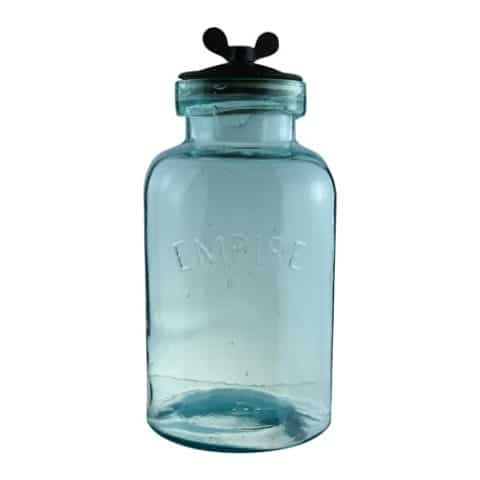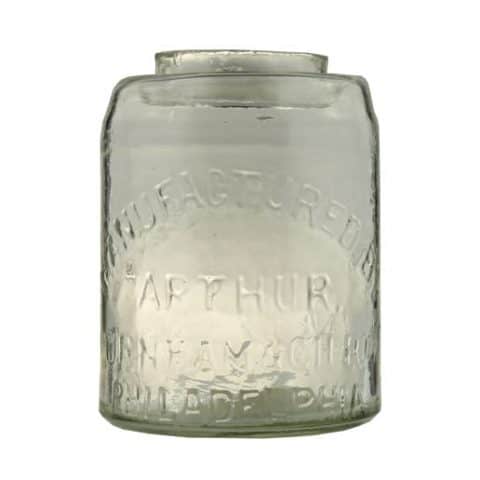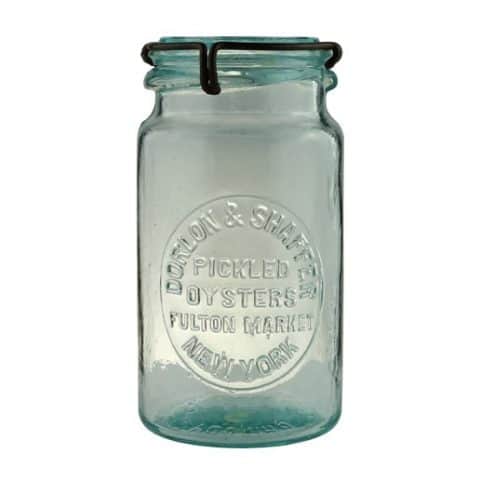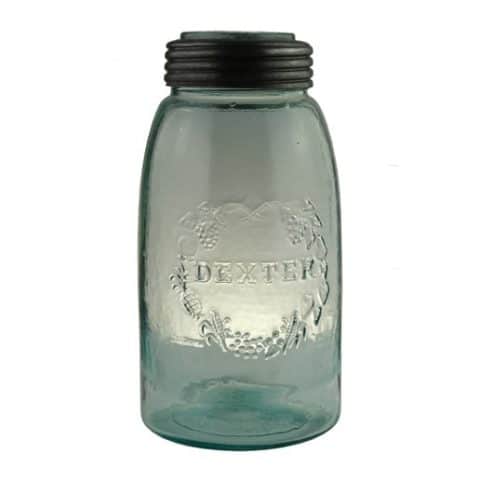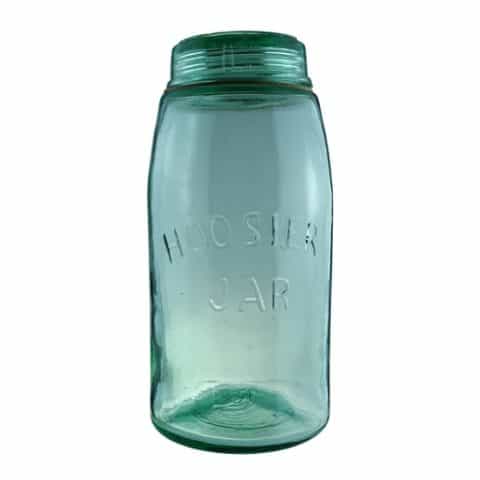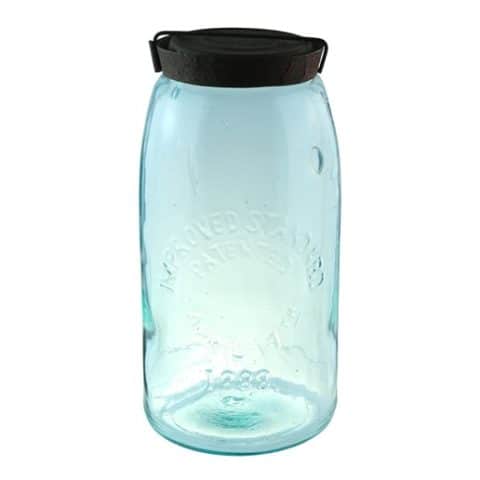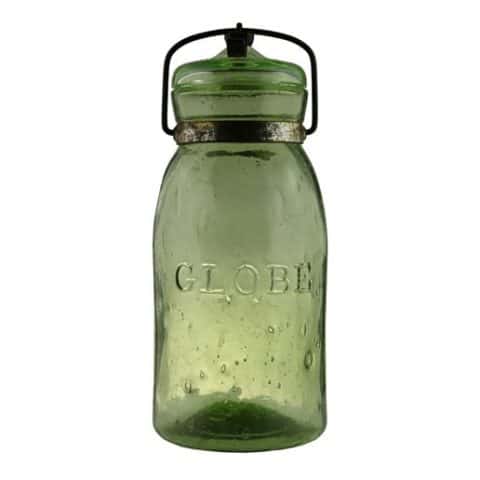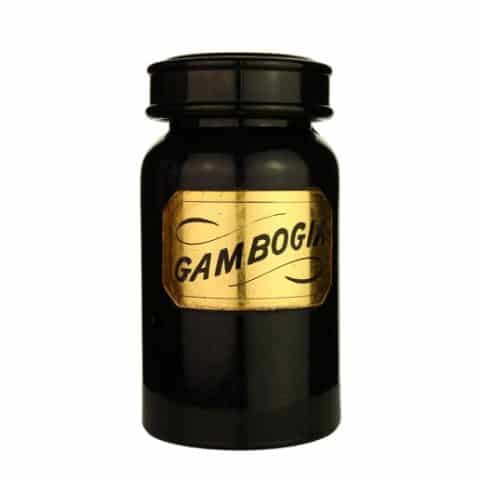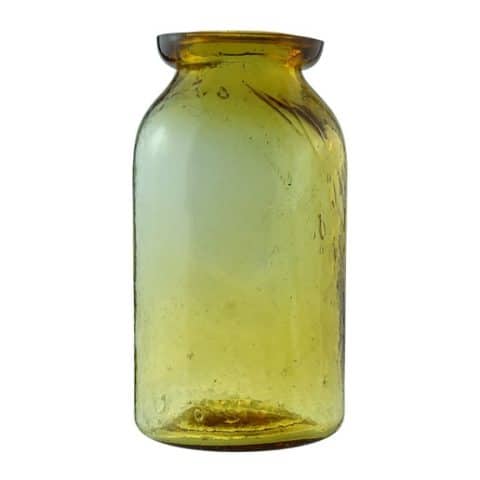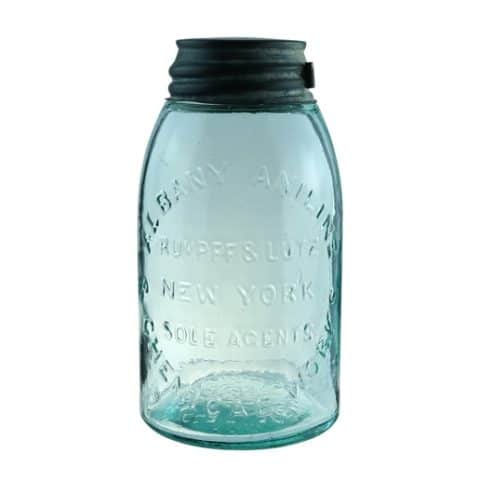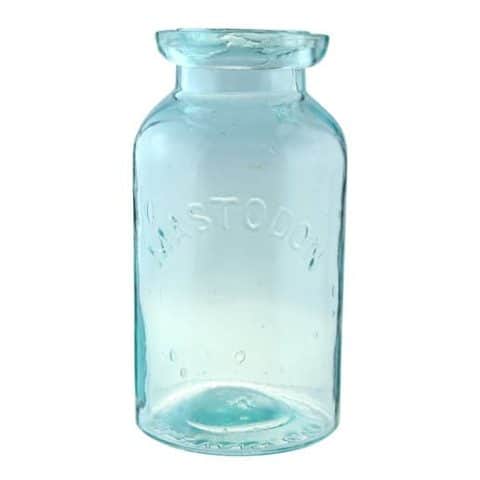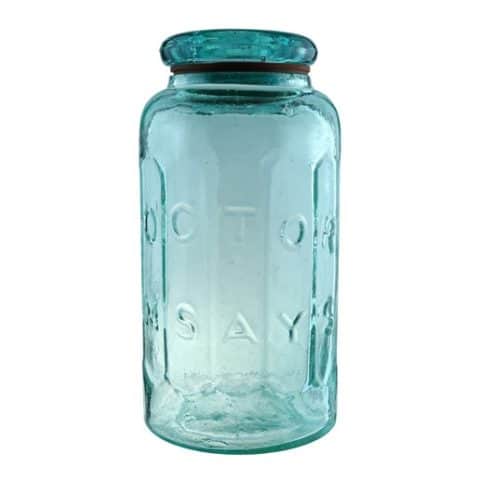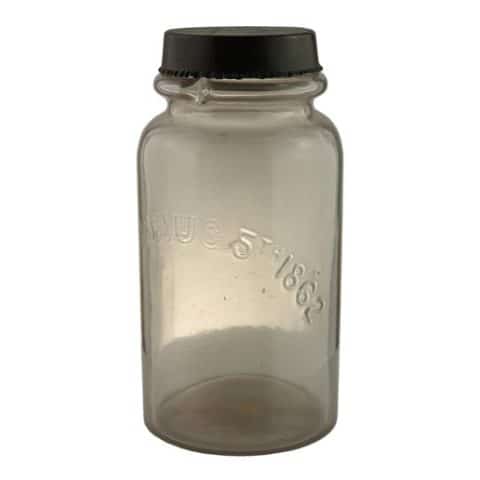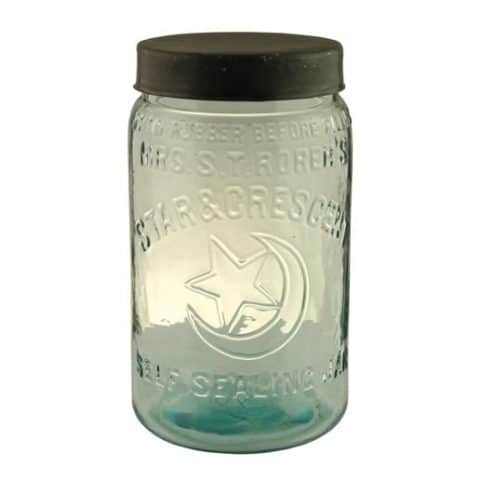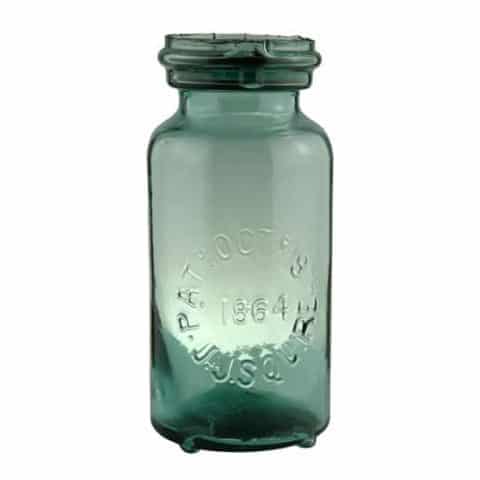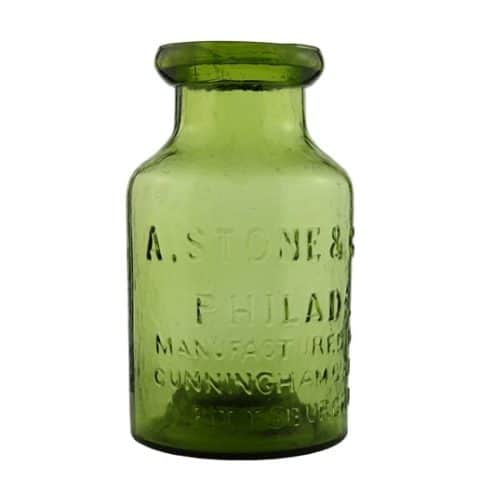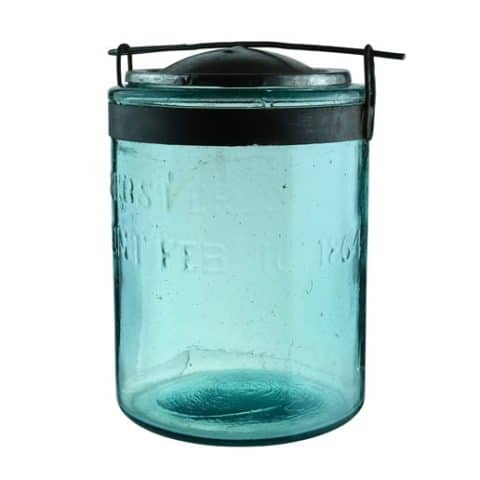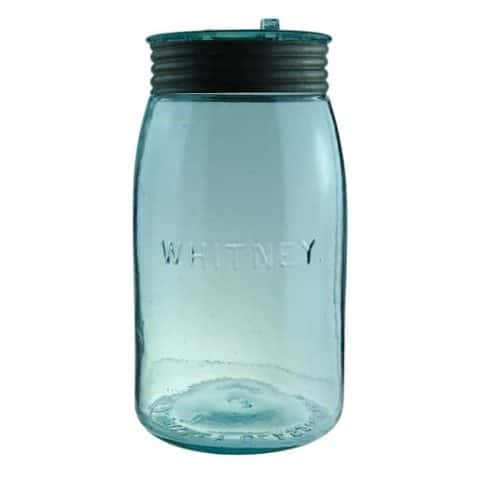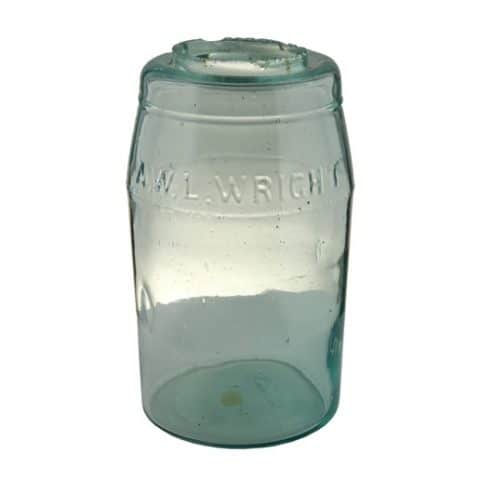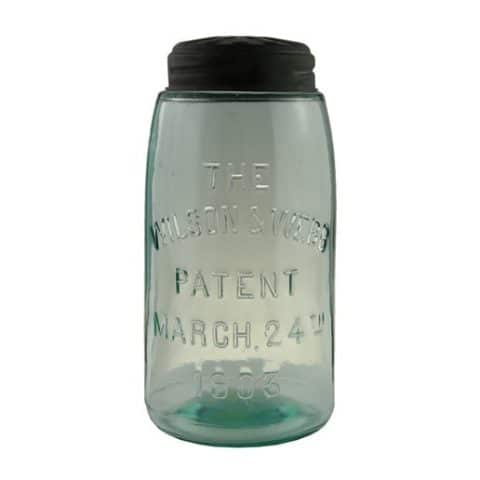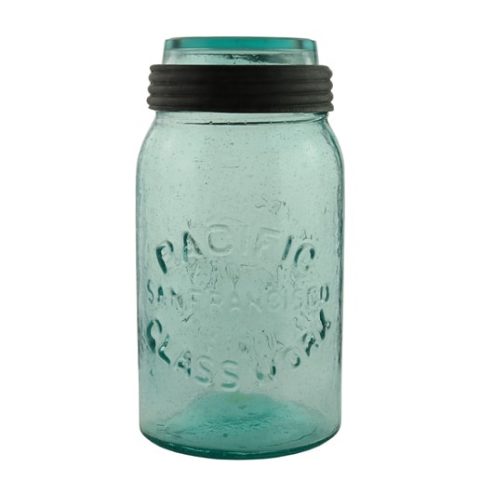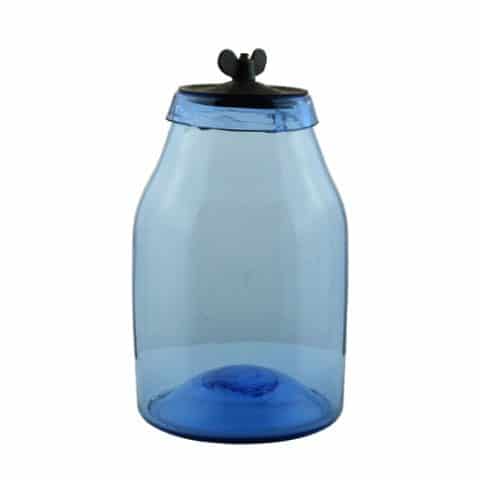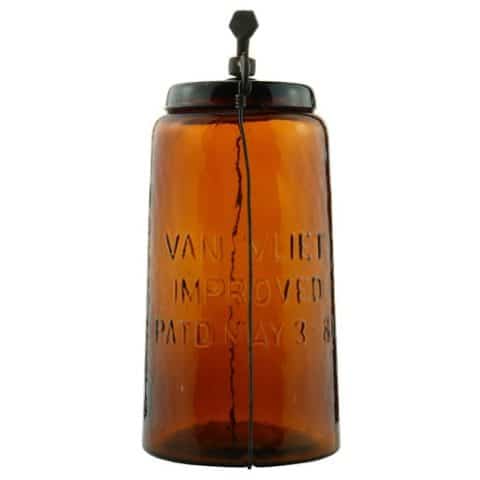J.J. Squire Patent 1864
Patd Octr 18TH 1864
J. J. Squire
John J. Squire, Windsor Locks, Connecticut
Thames Glass Works, Fort Neck, New London, Connecticut
Aquamarine Quart
Provenance: Jerry McCann Collection
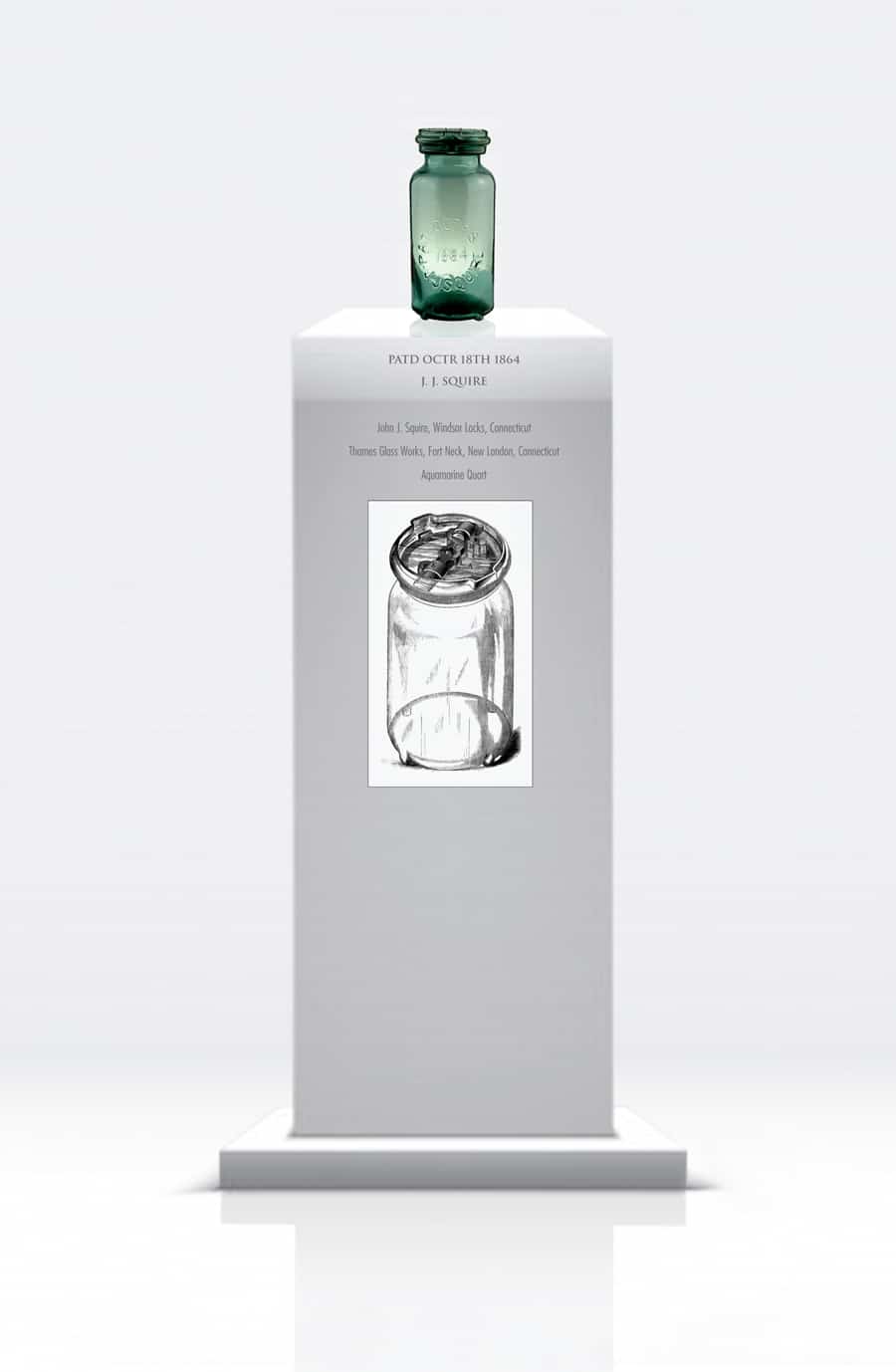
J. J. Squire jars are quite rare. The patentee was John J. Squire of Windsor Locks, Connecticut. Squire is elusive in history though we can place him as a glassblower according to an 1865-66 New London, Connecticut City Directory. He was working for the glass manufacturer N. S. Fish of Shaw’s Neck who was running Thames Glass Works in Fort Neck, Connecticut.
The J. J. Squire jar is one of the very few jars that have footed glass pedestals on the base of the jar. John J. Squire took out two patents for the jar, one dated October 18, 1864, and the other dated March 7, 1865. Our museum example is embossed in a circle on the front of the jar, ‘J. J. SQUIRE PATD OCTR. 18TH.’ The date ‘1864’ is prominently embossed on a straight horizontal line within the typographic circle.
The New London Chronicle reported on August 13, 1863, that a glassworks near Fort Trumbull that had been idle, had been purchased, and was to be operated by William Barry and Nathan S. Fish. This operation was called the Thames Glass Works. The December 22, 1864 issue of the Norwich Weekly Courier reported that the Thames Glass Works was manufacturing a large amount of light and dark green glass. The firm was listed as having a first-rate reputation. Preserve jars were among the products of this company along with glass insulators for telegraph wires.
One of their specialty canning jars was the aquamarine quart jar bearing the embossing reading “J. J. Squire.” Squire was one of nine employed glassblowers who took out the patent.
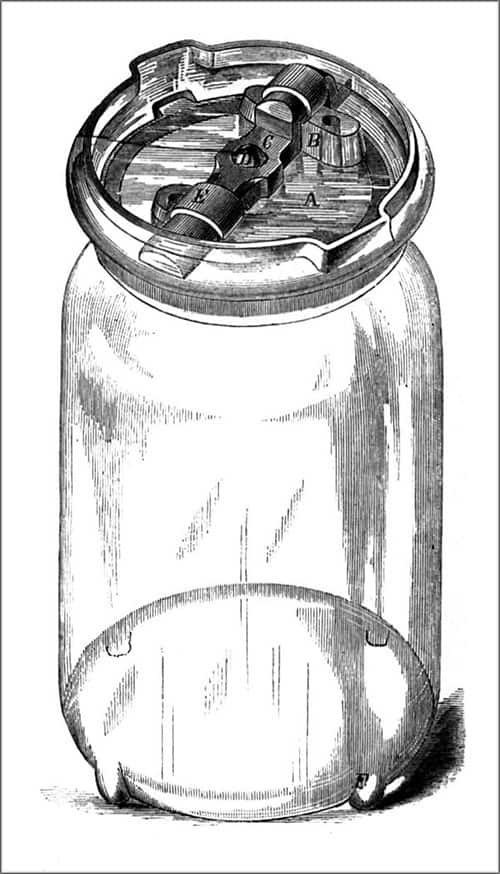
We will look at a Squire’s Fruit Jar article in the January 2, 1865 issue of The Scientific American to best understand the jar.
SQUIRE’S FRUIT JAR
During the last summer articles on preserving fruit were published in the SCIENTIFIC AMERICAN which pointed out defects in the present jars, and hinted at improvements which would make them much better. The jar here illustrated is, we are assured by the inventor, one result of our suggestions, and other readers may take the hint thus thrown out, and act upon it with advantage to themselves.
This jar provides against any cavity or space above the fruit. It is well known to all practical persons that heat expands the bulk of the fruit so that when cold the contents shrink and leave a space above which is detrimental. Mold accumulates on the top of the fruit and destroys its commercial value as well as the flavor. To provide against this defect the jar must be filled, as the fruit shrinks, with sirup (sic), so that when at a moderate temperature no cavity will exist.
The method of doing this will be understood by perusing the description. The fruit is first scalded, or not, as desirable, and put in the jar; after which the cap, A, is pushed down to its place. There is a rubber gasket between the cap and the jar, so contrived that the fruit does not come in contact with it, which makes an air tight joint between the two glass surfaces. The fruit in the jar is then brought to the boiling point by being placed in a common boiler heated gradually. The fixed air remaining in the jar is expelled through the small hole, B ; and the clamp, C, which works on a strong glass stud, D, is shifted round until the holes are covered; the clamp has a rubber ring, E, slipped over it, which keeps the surfaces below it air tight, and its ends work in a scroll groove in the neck of the jar. The jar is then removed, and as the contents fall by shrinking, additional sirup is poured in through one of the orifices, the air within escaping by the other. In this way the jars are filled to the very top, and no mold accumulates.
Another good feature in this jar is the application of the points, E, to the bottom. All persons who have canned fruit must have noticed a propensity in the jars to upset when the water surrounding them boils. This is occasioned by the confined air under the bottoms which, in seeking to escape, oversets, the jar unless care be taken to prevent it. The jars are also frequently broken at the bottom from being taken out and set on colder surfaces, the difference in temperature cracking the glass quickly. Both of these defects are obviated in this jar, for the space beneath aIlows the air to escape, and the slight surface presented by the points permits the vessel to be set any where with impunity; they also strengthen the bottom.
The combination of these several features should make a most excellent fruit jar, and we predict for it a large sale when its virtues become known. It was patented through the Scientific American Patent Agency, on Oct. 18th, 1864, by John J. Squire, of Windsor Locks, Conn. For further information address him at that place.
Nathan S. Fish and William Barry subsequently sold the Thames Glass Works to Ellenville, New York interests. In December 1865, the factory was taken over by a new firm that renamed the works the Fort Trumbull Glass Works with D. S. Calhoun, president, N. Hendricks, secretary/treasurer, and J. R. Gilbert, agent. H. G. Foster also was part of the firm. A stock certificate dated June 2, 1868, shows he was then president of the glass company.
Fort Trumbull Glass produced druggist ware, including medicinal bottles, fruit and pickle jars, wines, demijohns, flasks, and orders for owners of private molds. They also produced bottles for popular medicines including Perry Davis’s Painkiller, Hyatt’s Infallible Life Balsam, Dr. Ford’s Pectoral Syrup, Wilbor’s Rheumatic Medicine, Ring’s Ambrosia, and Knowles’ Hair Invigorator. There is also a unique free-blown pitcher known to have been blown there.

Primary Image: The J. J. Squire jar imaged on location by Alan DeMaison, FOHBC Virtual Museum Midwest Studio
Support: Reference to Red Book #11, the Collector’s Guide to Old Fruit Jars by Douglas M. Leybourne, Jr.
Support: Reference to Kissin Cousins, A History of Insulator and Fruit Jar Manufacturers, Presented by Tom G. Moulton
Support: Reference to Fruit Jar Annual 2020 – The Guide to Collecting Fruit Jars by Jerome J. McCann
Support: Reference to the Museum of Connecticut Glass
Support Image: Auction Lot 137: “J.J. Squire / Patd. Oct. 1864 / March & Sept 1865” Fruit Jar, probably New London Glass Works, New London, Connecticut, 1865-1876. Cylindrical with four external lugs around the mouth, aquamarine with olive amber striations around the shoulder and into the body above the embossing, ground mouth with lugged glass lid – smooth base with embossed “2” and three raised pedestal “feet”, quart. L #2697 A rare jar with an appealing and equally rare color combination. Fine condition. Ex Muriel Heath collection. – Norman Heckler Jr. & Sr., Norman C. Heckler & Company, Auction #177
Support Image: Three original glass lids for a J.J. Squire jar, Glass lid top, and underside. – Greg Spurgeon, North American Glass
Join the FOHBC: The Virtual Museum is a project of the Federation of Historical Bottle Collectors (FOHBC). To become a member.
















